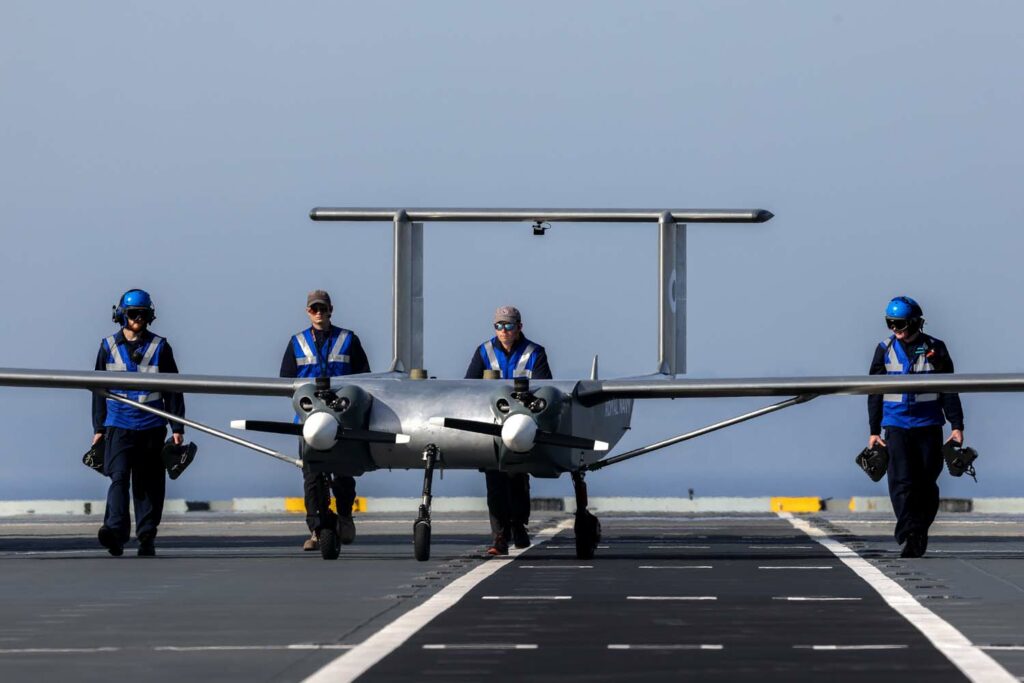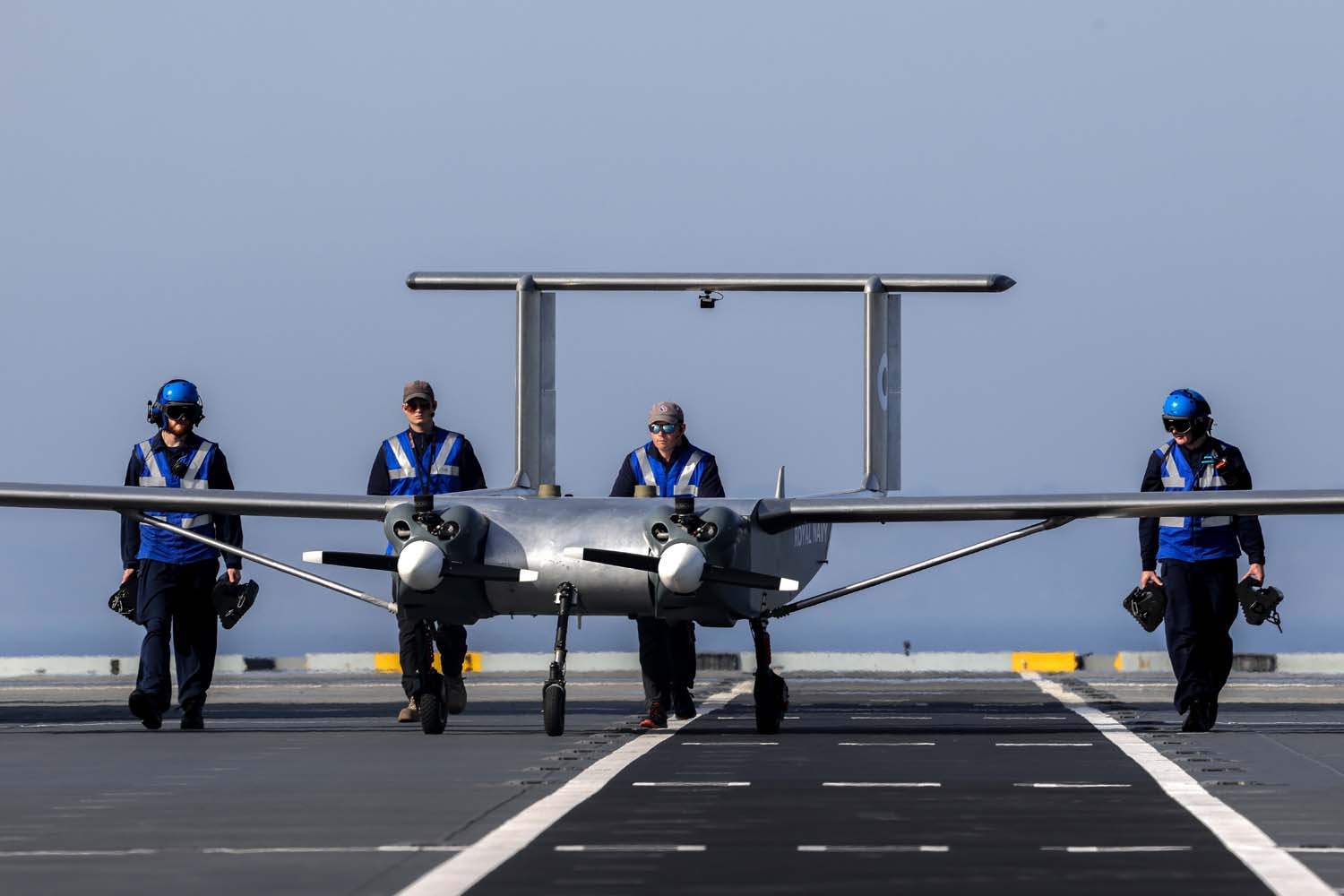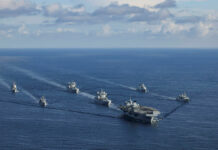The UK Royal Navy (RN) has flown a fixed-wing uncrewed aerial vehicle (UAV) on and off one of its aircraft carriers for the first time.
The historic event, which an RN source confirmed to ESD occurred on the afternoon of 5 September 2023, involved a twin-engine, twin-boom UAV from UK firm W Autonomous Systems (WAS) taking off from Predannack, the satellite airfield of RNAS Culdrose on the Lizard Peninsula, conducting a flight of around 20 minutes out to HMS Prince of Wales, which was stationed off the Cornish coast, and then landing on the carrier. Once a symbolic payload of naval memorabilia was removed by crew, the UAV was turned around and relaunched back to Predannack.
In a press release the RN noted that, while HMS Prince of Wales has experimented with UAVs before, these were either small quadcopters or Banshee target drones that were launched by catapult and ultimately recovered via parachute.
The UAV trials off Cornwall with HMS Prince of Wales are a vital precursor to the RN integrating UAV operations onto its two Queen Elizabeth-class carriers alongside manned F-35B Joint Strike Fighters and helicopters. While UAVs would probably initially be used just for logistical purposes, further into the future they are also likely to be adopted for combat operations.
The trials were the first stage of an autumn programme in which the RN will continue to push the boundaries of naval aviation with its largest warship class.
Southampton-based WAS is generally known for its work in producing long-range, heavy-lift logistical UAVs. Its HMCS UAV, which can carry a payload of 100 kg up to 1,000 km, was selected for the RN trials because it only needs a 150 m-long runway: just over half the length of a Queen Elizabeth-class carrier’s flight deck. The WAS UAVs also possess a ground-breaking autopilot system that allows them to land on uneven surfaces and eliminates the need for them to be controlled remotely by trained pilots.
The commanding officer of HMS Prince of Wales, Captain Richard Hewitt, was quoted by the RN as saying, “HMS Prince of Wales is a fifth-generation aircraft carrier and operating autonomous drones like this will become the norm across future Royal Navy Carrier Strike Groups in our 50-year lifespan.

“We are all proud here in HMS Prince of Wales to achieve this: a fantastic milestone for all involved and the first of many firsts on this deployment to shape the future of Royal Naval Carrier Strike innovation as we prepare for our strike group deployment in 2025.”
Lieutenant Ash Loftus, leading the trials for the RN on board the carrier, added, “Today’s demonstration is the culmination of 18 months of hard work from dozens of people across the Royal Navy and W Autonomous Systems. Carrier aviation is amongst the most difficult aspects of naval warfare and this success is testament to their efforts.”
Stephen Wright, executive chairman and founder of W Autonomous Systems, was quoted as saying, “This landing demonstrates the agility of our autonomous drone. We are hugely proud to deliver this ground-breaking trial for the Royal Navy and showcase the future of aviation.”
Charles Scales, Co-Founder of W Autonomous Systems, added: “Landing on a moving naval carrier was the ultimate test and our autonomous heavy-lift HCMC drone passed with flying colours.”
Apart from the US Navy, China and Turkey are the only other nations that appear to be making progress integrating fixed-wing UAV operations onto carriers.
The first pilot to take off from a moving warship was the RN’s Commander Charles Rumney Samson, who on 9 May 1912 took off from the battleship HMS Hibernia in a Short S.38 biplane. The first pilot to land on a moving warship was Squadron Leader Edwin Harris Dunning of the Royal Naval Air Service, who on 2 August 1917 landed a Sopwith Pup biplane onto a forward deck built onto the battlecruiser HMS Furious.
Peter Felstead






